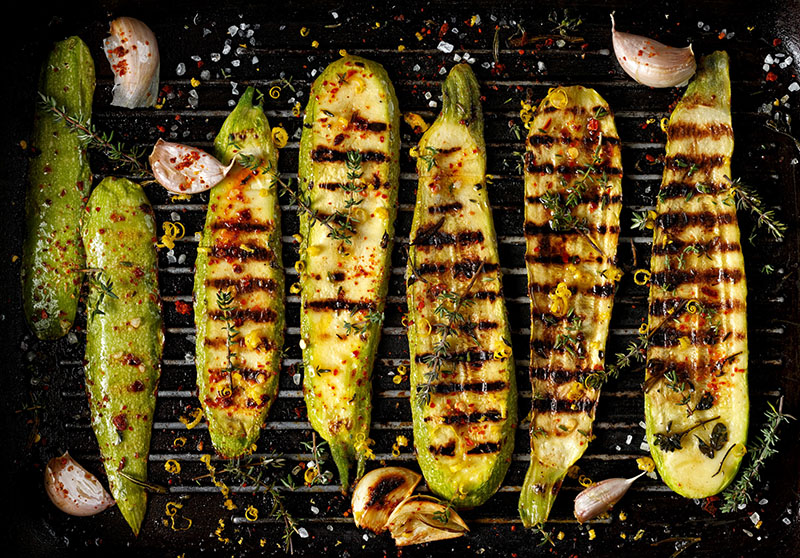
July is national grilling month! The warm weather is here, farmer’s markets are in every square and we are surrounded by a variety of in-season produce. From peaches and watermelon to eggplant and zucchini, all these nutrient-packed fruits and vegetables are perfect for meeting the “half your plate” recommendation. But move over cold salads and fruit kabobs, this summer harvest can also be super tasty thrown right on the grill next to your favorite protein!
“Many people associate the grill with corn on the cob,” says Brigham and Women’s Faulkner Hospital’s Senior Dietitian and Nutrition Clinic Coordinator Stefanie O’Connor, MS, RD, LDN. “Did you know corn is technically a vegetable but our bodies process it more like our beloved starches (think rice and bread)? Corn, squash, plantains… all of them are considered STARCHY vegetables. To better manage our weight and blood sugar levels, we should be eating corn OR the burger/hot dog bun with our meal, not both. Americans really fall short eating enough of the fiber-filled, NON-starchy vegetables that keep us fuller longer, like zucchini, mushrooms, asparagus and bell peppers.”
Want to try adding some non-starchy veggies to your grilling repertoire? O’Connor has some tips and tricks for grilling produce:
“Speaking of meat, the grill isn’t just for hot dogs and hamburgers anymore,” says O’Connor. “There is now a long list of plant-based proteins available that can satisfy a summer cook-out. ‘Burgers’ made of pea or soy protein are a delicious meat alternative. ‘Veggie’ burgers have been popular for quite some time. These substitutes incorporate minced vegetables and provide a source of protein by mixing in beans.”
For even more resources on grilling produce, O’Connor recommends this guide from the USDA, highlighting fruits and vegetables for each season, as well as recipes.
Want to learn more about healthy eating? Contact Brigham and Women’s Faulkner Hospital’s Nutrition Clinic at 617-983-4455 to set up an appointment with a registered dietitian.
Published 6/26/23
Looking for more news from BWFH? Go to News to find articles about health, updates to our programs and services and stories about staff and patients.
Go to News